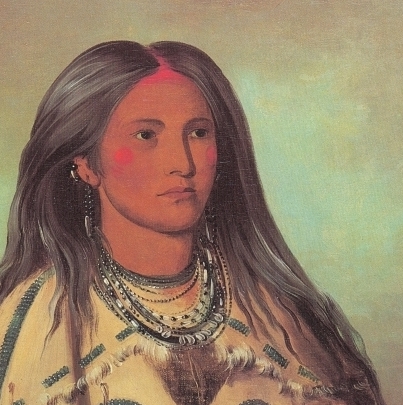I have read some new
infotmation about tribe Mandan. And I want to share this information
with you.
 |
Portrait of Sha-kó-ka, a Mandan girl,
by George Catlin, 1832
|
The Mandan are
a Native
American people living in North Dakota. They are enrolled in the Three Affiliated Tribes of the Fort Berthold Reservation,
North Dakota. About half of the Mandan still reside in the area of
the reservation; the rest reside around the United States and in Canada.
The
history of treib Mandan tells, that the Mandan
lived along the banks of the Missouri River and two of its
tributaries—the Heart and Knife Rivers—in
present-day North and South Dakota. Speakers of Mandan, a Siouan language, the people developed a settled
culture in contrast to that of more nomadic tribes in the Great Plains region.
The Mandan
Children were
named ten days after their birth in a naming ceremony, which also officially
linked the child with its family and clan. Girls would be taught domestic
duties, farming, and how to keep a home. Boys were taught hunting and fishing,
and would begin fasting for religious
visions at the age of ten or eleven. Marriage among the Mandan was generally
arranged by members of one's own clan, especially uncles; although,
occasionally it would take place without the approval of the couple's parents.
Divorce could be easily obtained.
The Mandan
survived by hunting, farming and gathering wild plants, though some food came
from trade. Hunting the buffalo was a critical part of Mandan survival and
rituals.
Up until the
late 19th century, when Mandan people began adopting Western-style dress, they
commonly wore clothing made from the hides of buffalo, as well as deer and
sheep.Mandan women wore ankle-length dresses made of deerskin or sheepskin.
This would often be girded at the waist with a wide belt. Sometimes the hem of
the dress would be ornamented with pieces of buffalo hoof.
Read more information here: http://www.accessgenealogy.com/native/tribes/mandan/mandanhist.htm
about

No comments:
Post a Comment